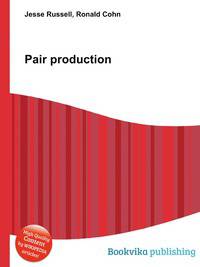Поиск книг, учебников, пособий в онлайн-магазинах

Pair production
Автор: Jesse Russell,Ronald Cohn, 66 стр., издатель: "Книга по Требованию", ISBN: 978-5-5111-8895-9High Quality Content by WIKIPEDIA articles! Pair production refers to the creation of an elementary particle and its antiparticle, usually from a photon (or another neutral boson). For example an electron and its antiparticle, the positron, may be created. This is allowed, provided there is enough energy available to create the pair – at least the total rest mass energy of the two particles – and that the situation allows both energy and momentum to be conserved. Other pairs produced could be a muon and anti-muon or a tau and anti-tau. However all other conserved quantum numbers (angular momentum, electric charge, lepton number) of the produced particles must sum to zero – thus the created particles shall have opposite values of each. For instance, if one particle has electric charge of +1 the other must have electric charge ?1, or if one particle has strangeness +1 then another one must have strangeness ?1. Данное издание представляет собой компиляцию сведений, находящихся в...
| В наличии: | ||||
|
|
Sprinter - 780 руб. |
Перейти 
|
 Лучшая цена Лучшая цена
|
|
|
|
Books.Ru - 873 руб. |
Перейти 
|
||
| Под заказ: | ||||
|
|
OZON.ru - 870 руб. |
Перейти 
|
||
Рейтинг книги: 



 5 из 5, 10 голос(-ов).
5 из 5, 10 голос(-ов).




 5 из 5, 10 голос(-ов).
5 из 5, 10 голос(-ов).



